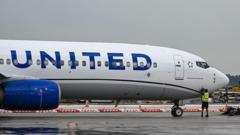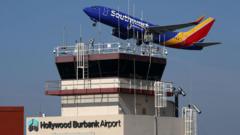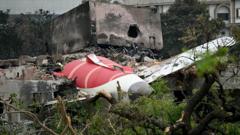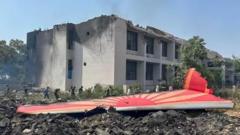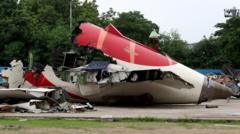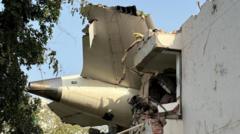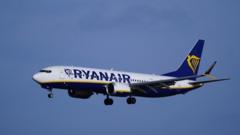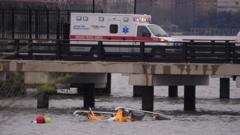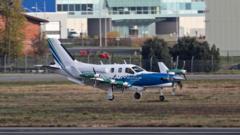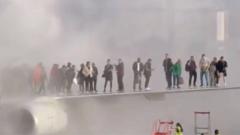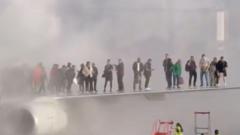The Newark Liberty International Airport recently experienced a serious incident where air traffic controllers lost contact with multiple planes, leading to significant flight disruptions and trauma leave for several staff members affected by the event.
Newark Airport Air Traffic Controllers Face Crisis After Communication Breakdown

Newark Airport Air Traffic Controllers Face Crisis After Communication Breakdown
A recent communication failure at Newark Liberty International Airport has led to numerous flight cancellations and controllers on trauma leave.
Newark Liberty International Airport has become the center of controversy following an incident on April 28, where air traffic controllers briefly lost communications with planes they were managing. A representative from the National Air Traffic Controllers Association revealed that the controllers were "unable to see, hear, or talk to them," which resulted in multiple employees being placed on trauma leave. This situation has caused significant operational disruptions, with over 150 flights canceled on Monday alone, according to FlightAware.
The airport, being one of the busiest in New York, has been struggling with staffing shortages for over a week. The Federal Aviation Administration (FAA) has acknowledged that "our antiquated air traffic control system is affecting our work force" and confirmed that controllers had taken leave because of the traumatic incident, which they stated could not be quickly addressed due to limitations in replacing them.
United Airlines has also weighed in, announcing the cancellation of 35 flights daily from Newark, criticizing that the facility "cannot handle the number of planes that are scheduled to operate there." United's CEO Scott Kirby stated that the airport's operational issues have been compounded by the fact that over 20% of FAA controllers "walked off the job."
While the exact number of controllers on leave due to the traumatic event remains undisclosed, the National Air Traffic Controllers Association has invoked provisions related to traumatic events for their staff. This incident occurs amid the U.S. Department of Transportation's plans to enhance the workforce of FAA air traffic controllers, promoting faster hiring and improved retention strategies.
In addition to the Newark incident, recent FAA personnel cuts initiated by the previous administration in February, following a fatal mid-air collision in Washington, have raised further concerns about the safety and efficiency of the air traffic control system. The FAA insists that they will continue addressing hiring and onboarding of air traffic controllers to better manage the increasing demands placed on the airspace.

